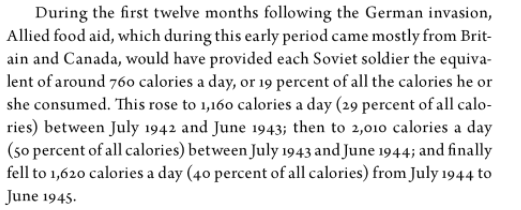During WWII the US provided tremendous support to both the UK and USSR. This support included military items, such as planes and tanks; mixed use items such as trucks and train locomotives; economic support such as cash, coal, and other resources, and even finished goods such as clothing and children's toys.
The level of aid was such that as much as 10% of the UK food supply came from Lend Lease and all Soviet losses of military vehicles and tanks in 1941 were replaced by Lend Lease. Roughly half the tonnage of US material overseas went to Lend Lease (the other half supported the US military in Europe and the Pacific).
What would have happened if the US had supplied the same level of material support, but sent all of it to the UK and none to the USSR?
The level of aid was such that as much as 10% of the UK food supply came from Lend Lease and all Soviet losses of military vehicles and tanks in 1941 were replaced by Lend Lease. Roughly half the tonnage of US material overseas went to Lend Lease (the other half supported the US military in Europe and the Pacific).
What would have happened if the US had supplied the same level of material support, but sent all of it to the UK and none to the USSR?

